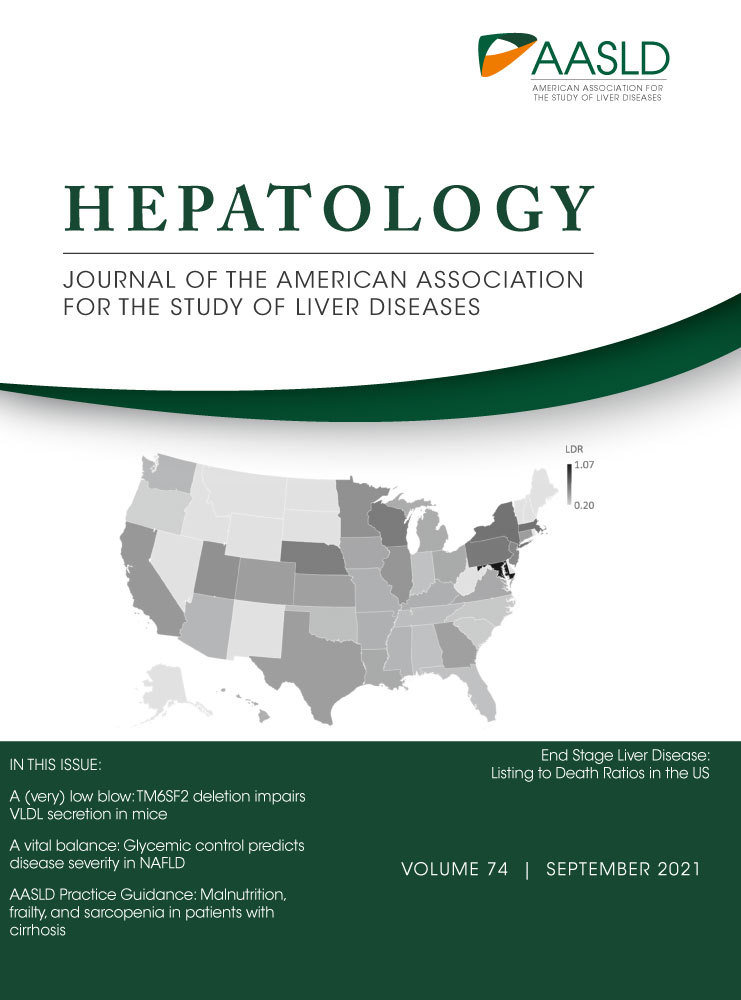Liver-Specific Deletion of Mouse Tm6sf2 Promotes Steatosis, Fibrosis, and Hepatocellular Cancer
Abstract
Background and Aims
Human transmembrane 6 superfamily 2 (TM6SF2) variant rs58542926 is associated with NAFLD and HCC. However, conflicting reports in germline Tm6sf2 knockout mice suggest no change or decreased very low density lipoprotein (VLDL) secretion and either unchanged or increased hepatic steatosis, with no increased fibrosis. We generated liver-specific Tm6Sf2 knockout mice (Tm6 LKO) to study VLDL secretion and the impact on development and progression of NAFLD.
Approach and Results
Two independent lines of Tm6 LKO mice exhibited spontaneous hepatic steatosis. Targeted lipidomic analyses showed increased triglyceride species whose distribution and abundance phenocopied findings in mice with liver-specific deletion of microsomal triglyceride transfer protein. The VLDL triglyceride secretion was reduced with small, underlipidated particles and unchanged or increased apolipoprotein B. Liver-specific adeno-associated viral, serotype 8 (AAV8) rescue using either wild-type or mutant E167K-Tm6 reduced hepatic steatosis and improved VLDL secretion. The Tm6 LKO mice fed a high milk-fat diet for 3 weeks exhibited increased steatosis and fibrosis, and those phenotypes were further exacerbated when mice were fed fibrogenic, high fat/fructose diets for 20 weeks. In two models of HCC, either neonatal mice injected with streptozotocin (NASH/STAM) and high-fat fed or with diethylnitrosamine injection plus fibrogenic diet feeding, Tm6 LKO mice exhibited increased steatosis, greater tumor burden, and increased tumor area versus Tm6 flox controls. Additionally, diethylnitrosamine-injected and fibrogenic diet–fed Tm6 LKO mice administered wild-type Tm6 or E167K-mutant Tm6 AAV8 revealed significant tumor attenuation, with tumor burden inversely correlated with Tm6 protein levels.
Conclusions
Liver-specific Tm6sf2 deletion impairs VLDL secretion, promoting hepatic steatosis, fibrosis, and accelerated development of HCC, which was mitigated with AAV8- mediated rescue.




